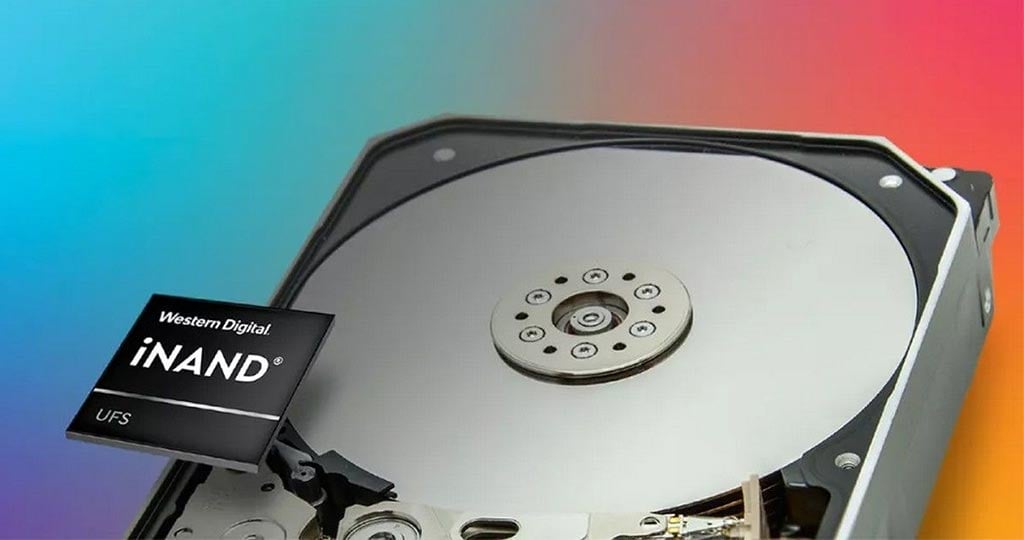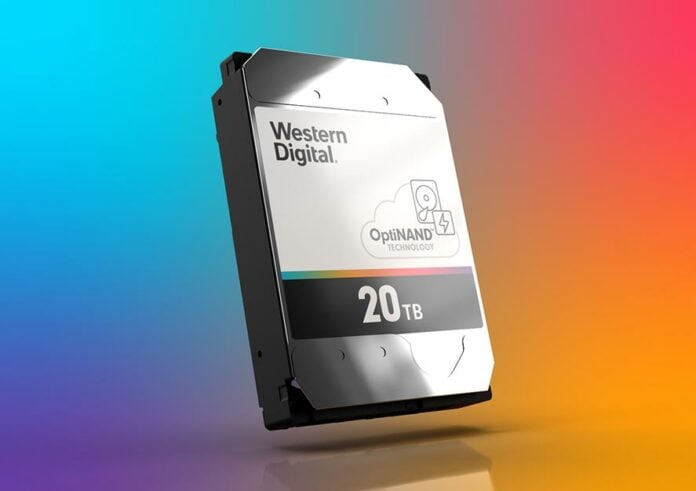Data-storage specialist Western Digital has released its first 20TB HDDs based on CMR (conventional magnetic recording) technology in the 3.5in format. The new models are particularly interesting for leveraging WD’s OptiNAND technology. With these commercially-available drives, WD pulls ahead in the CMR HDD race to higher capacities. For example, Seagate’s 20TB drives use HAMR (heat-assisted magnetic recording), Toshiba uses MAMR (microwave-assisted magnetic recording), and WD’s previous 20TB drives used SMR (shingled magnetic recording).

The company is making 20TB CMR HDDs available in two HDD families; the WD Gold 20TB (US$680), and the datacentre-targeted WD Ultrastar DC HC560 20TB. ComputerBase explains that WD is using a nine-platter design with about 2.2GB per magnetic disk in order to create the 20TB SKUs.
In the introductory paragraph, you will have also noticed mention of WD OptiNAND. This isn’t what it might be most obvious to guess – a NAND cache or buffer on the HDD – rather it is used to store extended HDD metadata, which intelligently allows for greater data density. OptiNAND works by storing information concerning read/write performance affecting factors such as the magnetic interference between certain tracks, and precise drivehead positioning. “It’s a delicate balance, because narrowing the write tracks too many times would cause an unacceptable performance impact. And that’s where the NAND enhancement in OptiNAND plays a key role,” explains WD in a blog post about the technology.

CMR HDDs with 20TB are just a stepping stone on the WD OptiNAND roadmap. Using the OptiNAND tech, WD says it has 50TB HDDs in its sights “this decade.”
So, what is the fuss about CMR? In 2020 there was some consumer backlash when the likes of WD, Toshiba and Seagate quietly introduced SMR drives into their HDD portfolios without being upfront about the recording technology used. It is important that HDD companies are more transparent about this due to the different performance characteristics of the various technologies. Later in 2020 it seemed to be agreed by the storage giants that clearly stating the recording tech used by various SKUs was a good thing.

